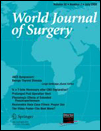Thyroid Incidentaloma: An Evidence-based Assessment of Management Strategy
Abstract
Background
Palpable thyroid nodules are present in 4–7% of the population and their prevalence increases with age. Thyroid incidentalomas—impalpable nodules detected fortuitously during a radiological investigation—may be found in up to 50% of patients. Although numerous guidelines exist that indicate the appropriate management of palpable thyroid nodules, there are no accepted guidelines for the increasingly common thyroid incidentaloma. Presently no level I or II evidence exists on this topic.
Methods
Systematic review of the literature using evidence-based criteria was performed.
Results
Thyroid incidentalomas are common and are mostly benign lesions. A small proportion is malignant, mainly papillary thyroid microcarcinomas (PTMC). Lesions <5 mm in diameter, even if PTMC, exceptionally metastasize and can be safely left. Lesions between 5 mm and 9 mm without sinister radiological features need not be investigated. The appropriate follow-up is controversial.
Conclusion
It is unlikely that a trial of sufficient power to demonstrate or refute the beneficial effects of presymptomatic investigation of thyroid nodules will take place. We propose a pragmatic approach based on current evidence that balances the benefit of early diagnosis and treatment with the cost to the patient and the healthcare system associated with unnecessary investigations and surgery.




